- Physical and social distancing due to the pandemic has negatively impacted youths’ mental health. Within the last year, youth have reported elevated levels of anxiety and depression as a result of isolation.
- COVID-19-related restrictions (e.g., stay-at-home orders, school closures) are correlated with significantly higher rates of suicidal thoughts and attempts in youth.
- Consequences of isolation are disproportionately affecting youth of color: Recent data from the U.S. Department of Education illustrates a racial and ethnic gap for students transitioning back to in-person schooling, with a higher percentage of students of color still learning virtually.
Youth nationwide would benefit from healthcare policy solutions targeting prevention, promotion, and treatment of mental health needs, as well as prioritizing access for youth living in communities where systemic inequities create barriers to care.
Recommendations For Policymakers
Increasing Access to Mental Health Care:
- Promote widespread screening efforts for symptoms of anxiety and depression, which tend to increase in adolescence. Providers (e.g., teachers, pediatricians, etc.) can facilitate screenings by leveraging creative mood check-ins or freely available screening tools (e.g., SCARED for anxiety, the PHQ-A for depression). Screening would ensure that adolescents with elevated symptoms are identified and receive the services they need.
- Ensure that schools are re-equipped and adequately staffed to deliver mental health care. For more than half of adolescents who received mental health services pre-pandemic, treatment involved a school-based component. Expanding a workforce of school psychologists, social workers, and counselors will increase the therapist-to-student ratio. Particular attention should be placed on youth who have thrived in a virtual environment and may be anxious about returning to in-person activities.
- Expand telehealth-based treatment as a convenient and efficient means of providing care to families facing barriers related to transportation, time, and cost. Priority can be placed on access to care, and especially in an effort to reach Black and Latinx communities disproportionately impacted by COVID-19.
Promoting Overall Well-Being:
- Support universal and targeted social-emotional learning initiatives focused on: 1) prosocial behavior including empathy and patience, helping youth differentiate between “social distancing and emotional distancing”; 2) emotion recognition, identification, and regulation, given that masks may make emotion identification challenging for many adolescents; and 3) simple relaxation techniques, coping strategies, and problem solving skills to deal with stress and anxiety.
- Ensure local resources connected to well-being are available to low-income and minority communities. · This may include opportunities that promote physical wellness, food availability, use of green space, and academic reengagement.
- Leverage social media to disseminate information. Host webinars, Q&A sessions, and town halls for teachers, parents, and other constituents, as well as link to related resources (e.g., housing, food, job) for families. Policymakers are encouraged to invite representatives from NAMI, MHA, or state mental health departments. See WHO for mental health resources and Health Affair for other policy recommendations.
The Research-to-Policy Collaboration (RPC) works to bring together research professionals and public officials to support evidence-based policy. Please visit their website to learn more.
Key Information
RPC Website
Research-to-Policy Collaboration
Publication DateApril 1, 2021
Topic Area(s)Social Services, Health
Resource TypeWritten Briefs
Share This Page
- Physical and social distancing due to the pandemic has negatively impacted youths’ mental health. Within the last year, youth have reported elevated levels of anxiety and depression as a result of isolation.
- COVID-19-related restrictions (e.g., stay-at-home orders, school closures) are correlated with significantly higher rates of suicidal thoughts and attempts in youth.
- Consequences of isolation are disproportionately affecting youth of color: Recent data from the U.S. Department of Education illustrates a racial and ethnic gap for students transitioning back to in-person schooling, with a higher percentage of students of color still learning virtually.
Youth nationwide would benefit from healthcare policy solutions targeting prevention, promotion, and treatment of mental health needs, as well as prioritizing access for youth living in communities where systemic inequities create barriers to care.
Recommendations For Policymakers
Increasing Access to Mental Health Care:
- Promote widespread screening efforts for symptoms of anxiety and depression, which tend to increase in adolescence. Providers (e.g., teachers, pediatricians, etc.) can facilitate screenings by leveraging creative mood check-ins or freely available screening tools (e.g., SCARED for anxiety, the PHQ-A for depression). Screening would ensure that adolescents with elevated symptoms are identified and receive the services they need.
- Ensure that schools are re-equipped and adequately staffed to deliver mental health care. For more than half of adolescents who received mental health services pre-pandemic, treatment involved a school-based component. Expanding a workforce of school psychologists, social workers, and counselors will increase the therapist-to-student ratio. Particular attention should be placed on youth who have thrived in a virtual environment and may be anxious about returning to in-person activities.
- Expand telehealth-based treatment as a convenient and efficient means of providing care to families facing barriers related to transportation, time, and cost. Priority can be placed on access to care, and especially in an effort to reach Black and Latinx communities disproportionately impacted by COVID-19.
Promoting Overall Well-Being:
- Support universal and targeted social-emotional learning initiatives focused on: 1) prosocial behavior including empathy and patience, helping youth differentiate between “social distancing and emotional distancing”; 2) emotion recognition, identification, and regulation, given that masks may make emotion identification challenging for many adolescents; and 3) simple relaxation techniques, coping strategies, and problem solving skills to deal with stress and anxiety.
- Ensure local resources connected to well-being are available to low-income and minority communities. · This may include opportunities that promote physical wellness, food availability, use of green space, and academic reengagement.
- Leverage social media to disseminate information. Host webinars, Q&A sessions, and town halls for teachers, parents, and other constituents, as well as link to related resources (e.g., housing, food, job) for families. Policymakers are encouraged to invite representatives from NAMI, MHA, or state mental health departments. See WHO for mental health resources and Health Affair for other policy recommendations.
The Research-to-Policy Collaboration (RPC) works to bring together research professionals and public officials to support evidence-based policy. Please visit their website to learn more.

Key Information
RPC Website
Research-to-Policy Collaboration
Publication DateApril 1, 2021
Topic Area(s)Social Services, Health
Resource TypeWritten Briefs
Share This Page
LET’S STAY IN TOUCH
Join the Evidence-to-Impact Mailing List
Keep up to date with the latest resources, events, and news from the EIC.




